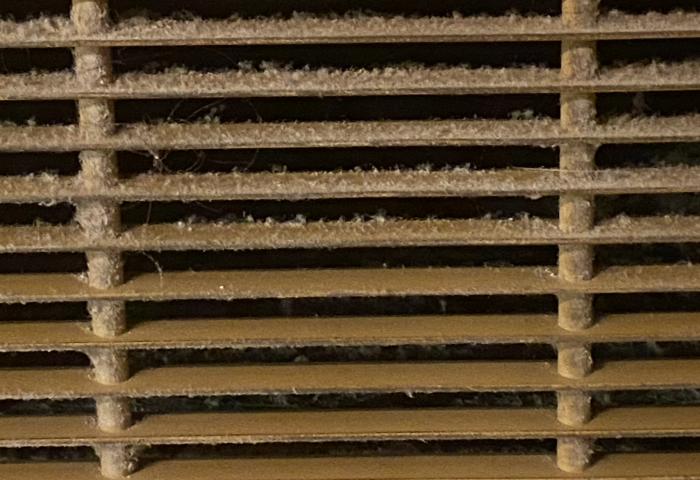Green Building Community
A Rate It Green Content Guide to: Indoor Air Quality (IAQ)
Posted by: Rate It Green Team

Indoor air quality, or IAQ, awareness has been growing in recent years due in some part to the COVID pandemic and increasing outdoor air pollution concerns such as wildfire exhaust/pollution, which enters buildings and irritates and causes health problems for occupants. Though IAQ is newer to many as a topic, building scientists and public health experts have long known that indoor air can be more toxic than outdoor air (reported decades ago by the EPA as 2 to 5 times more - or more - than typical outdoor air). This unhealthy air means a greater risk for respiratory problems, including asthma and lung cancer, in addition to other irritations and serious medical conditions.
One reason for greater indoor pollution risk is that we’ve been building homes “tighter” or less leaky in our efforts to increase energy efficiency. This evolution makes perfect sense for energy and emissions, savings, and comfort. But it’s important that we properly dilute and exhaust pollutants so that they do not stagnate or build to unacceptable levels.
Many factors determine indoor air quality. Indoor air quality of course relates to outdoor air quality, as occupants bring outside air in through mechanical ventilation or through means as simple as opening a door or window. Air also seeps into buildings through cracks in foundations and walls. With mechanical ventilation, good air quality depends on proper filtration, temperature, and humidity management. Keep in mind that indoor air is also greatly affected by our activities inside a building as well as the chemicals and products we bring into buildings, including cleaning products and even furniture.
Indoor air is critically important to human health, as we spend up to 90% of our time indoors. We need to increase education as to how air enters and flows through buildings, and how both building professionals and occupants can impact air quality.
Would you like to know more about how air enters our homes, key indoor pollutants, the mechanical ventilation systems that can help us filter and condition air to healthy levels, and how we can begin to address indoor air quality and monitor key indoor air pollutants (an evolving industry)? Read on to see the IAQ information we've curated and created to date, and add your voice! What topics can you teach others, what are your questions, and what information are you still searching for?
Indoor Air Quality (IAQ) Introductions:
- Indoor Air Quality (IAQ) - An Introduction, and Starting a Wider Conversation
- Walking and Talking about Fresh Air and Ventilation with Green Building Expert Matt Hoots - and Oliver
- Reviewing the Top Benefits of Healthy Air at Home, with Aprilaire
- An Introduction to Aprilaire and Whole House Air Quality Systems
- Green Building Myth Busting: Natural Ventilation - Do Your Walls Need to "Breathe?"
Indoor Air Quality and Fossil Fuels:
- Building Electrification: Why It Matters to Your Wallet, Health, Comfort, and the Environment
- What is the Future of Gas Cooking?
- Natural Gas Cooking - An Update and Recent News
- Making the Connection: Sustainable Living and Electrifying Everything
- "Gas vs Electricity" Misperceptions Still Tipping the Scales?
Ventilation:
- Whole House Energy Recovery Ventilators (ERVs) Explained, by Panasonic
- Filtration and Airflow in Whole House HVAC Systems: Filter Cabinets and MERV Options
- Demystifying Ventilation and Energy Recovery Ventilators (ERVs)
- A Look at How ERVs Work with Panasonic, How 80% Efficiency Might Work in Practice
- Remote Hood Exhaust Fan Retrofit Delivers Significant Noise Reduction
- Automatic Bath Fan Sensors Reduce Humidity, Pollutants, and Odors
- Whisper Green Fans from Panasonic Eco Solutions - Quiet Prevention for Moisture and Condensation (and Smart!)
- Pros and Cons of an airtight house
- The “Perfect Wall” defined and demonstrated
- Hi-velocity HVAC system used in modern designed homes
- rheia's Comfort by Design - Smaller, Energy and Labor Efficient Air Distribution Systems
Humidity:
- Humidity, Hardwoods and Homes - The Building Science Approach to Protecting your Investment (Video)
- Humidity Control Master Class from Therma-Stor
- Whole House Humidity Control ALL Year Long || Aprilaire
- Whole House Humidity Control - Dehumidification and Humidification, with Aprilaire
- What is the ideal humidity needed to help maintain hardwood flooring?
Filtration:
- Exploring Whole House Filtration and Particulate Matter, with Aprilaire
- Filtration and Airflow in Whole House HVAC Systems: Filter Cabinets and MERV Options
- Air Filtration at the #1920sMakeoverATL Showhouse
Sensors, and Smart and Reactive HVAC Equipment and Controls:
- Reactive Sensors and Controls for Home Ventilation, Featuring Corbett Lunsford
- Smart Exhaust Controls - Sensors Improve Garage and Indoor Air Quality (IAQ)
- Customized Switches and Sensors for Indoor Air Quality || Swidget
- Schneider Electric's Home Energy Management Suite - Controlling Comfort, Resilience, and Energy Efficiency in One App
Air and Vapor Barriers, and Radon:
- Getting to Know Stego Barrier Solutions - Keeping Vapor, Soil Gases and other Ground Contaminants out of our Homes and Commercial Buildings
- Radon Control starts with a good design
- One Family's Radon Story - Testing and Continuous Monitoring are Key
- Radon and Vapor Control Layers in the 1920sMakeoverATL Showhouse
- Why Air Sealing and Insulation are Both Essential
- Pros and Cons of an airtight house
- 50% of the "perfect wall" control layers with one product
- What is a "water resistant barrier" (WRB), examples and misconceptions
- What is ACH50, and why does it matter?
- Buildings need to dry- not breathe!
- An Introduction to Dorken: Air and Moisture Barriers for Residential and Commercial Building Products
Garage Safety:
The #1920sMakeoverATL Deep Energy Retrofit and Indoor Air Quality:
We will also be sharing a great deal of IAQ-related content as a part of our collaboration with the #1920sMakeoverATL project. Originally planned as a deep energy home retrofit, this project has gone all-electric and will now also be a Passive House! Check out the Pre-Construction Virtual Reality Tour, and stay tuned for a project tour and the final big reveal as well. Each tour contains links to relevant videos, articles, discussions, and more. Indoor air quality content includes:
- High Performance Residential Vapor Barriers - StegoHome and the #1920sMakeoverATL Renovation
- Air Filtration at the #1920sMakeoverATL Showhouse (Video)
- Discussing Air Tightness and Blower Door Testing with Corbett Lunsford, Matt Hoots, and Chris Laumer-Giddens (Video)
- Radon and Vapor Control Layers in the 1920sMakeoverATL Showhouse
- Asbestos Testing at the #1920sMakeoverATL Deep Energy Retrofit Project
- Radon Control starts with a good design
We've highlighted here several videos, articles and discussions related to understanding and improving indoor air quality, but we’d also like to hear from you, our community members and friends. Do you have great ideas for how homeowners and occupants can improve indoor air quality, including ideas on how we can address this topic more equitably? Do you have expert ideas to share on this topic, or questions you need answers to?
So many green building concepts are related, as is the case for indoor air quality and electrification. Be sure to visit our Electrification and Decarbonization Content Guide to learn more abourt why and how we need to transition away from indoor fossil fuel combustion.
Let’s start some more indoor air quality discussions. Add your voice to the conversation!
Please be kind and respectful!
Please make sure to be respectful of the organizations and companies, and other Rate It Green members that make up our community. We welcome praise and advice and even criticism but all posted content and ratings should be constructive in nature. For guidance on what constitutes suitable content on the Rate It Green site, please refer to the User Agreement and Site Rules.
The opinions, comments, ratings and all content posted by member on the Rate It Green website are the comments and opinions of the individual members who posts them only and do not necessarily reflect the views or policies or policies of Rate It Green. Rate It Green Team Members will monitor posted content for unsuitable content, but we also ask for the participation of community members in helping to keep the site a comfortable and open public forum of ideas. Please email all questions and concerns to admin@rateitgreen.com

